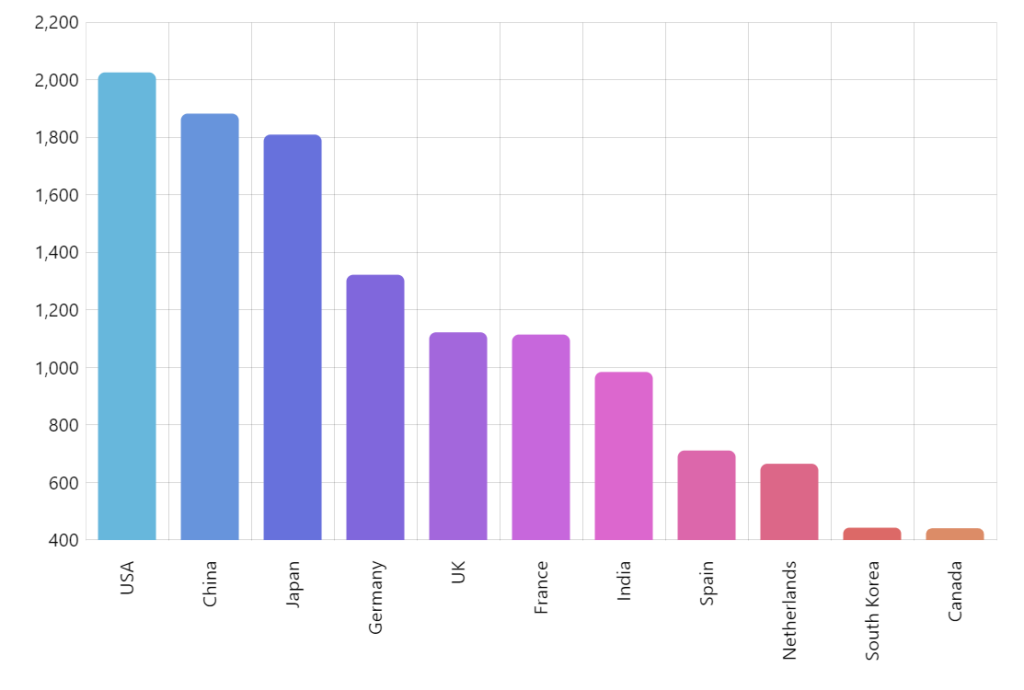UK Interest Rate Decision: Members will be aware that the Monetary Policy Committee voted to maintain Bank Rate at 5.25% at its meeting this week. However, perhaps the most significant element of this decision is that none of the Committee’s members voted to raise interest rates for the first time since September 2021. The vote was 8-1, with the dissenting view being for a reduction of 25 basis points.
At its previous meeting, we noted that the mood had changed from “what direction will the next change be” to “when will the rate be cut”. The voting at this meeting confirms the sentiment that the next change will be a cut, with the question remaining as to when – most commentators suggest that this will probably be in June rather than the next meeting (early-May). However, in his press conference, the Bank’s Governor said that interest rate cuts could come “before inflation hits its 2% target”; it is widely expected (and was included in the Bank’s last forecast) that the April inflation rate (which will be published in the middle of May) will be below the 2% target, which implies a cut at the next MPC meeting.
The decision to keep the Bank Rate unchanged matches that of the Federal Reserve in the US last week and the European Central Bank a fortnight ago. As with the UK, falling inflation rates point to reductions in interest rates coming in the next few months. However, one immediate reaction to the MPC announcement was a weakening of Sterling; this implies that the markets expect UK interest rates to fall sooner than had previously been expected. In parallel, there was a rise in the value of the FTSE100 stock market – this is mainly a reaction to the movement in the exchange rate as these usually operate in opposite directions given the importance of US$ denominated business for the FTSE100 companies.
You can get the Bank of England’s Monetary Policy Summary and the minutes of the MPC meeting from their website at https://www.bankofengland.co.uk/monetary-policy-summary-and-minutes/2024/march-2024.
—————————————-
Flash Purchasing Managers Index, March 2024: S&P Global, who produce most of the Purchasing Managers’ Index (PMI) reports have published their flash estimates for March – these are usually based on about 85% of the final number of returns.
The UK reading for the manufacturing sector showed a significant improvement on recent months but while the value of 49.9 was the highest since July 2022, it just failed to tick above the threshold of 50 which marks the boundary between expansion and contraction of activity in the sector.
The manufacturing PMI is a composite index based on five factors; in the UK, the output element did manage to edge just above 50 for the first time since February 2023 thanks, it seems from reports, to a marginal improvement in new orders (the first for nearly two years) and to customer re-stocking. The latter may be related to the extension of suppliers’ delivery times (this also has a positive impact on the PMI calculation) as a result of shipping delays around the Red Sea which is also driving an increase in input prices.
There is a different picture in the Euro-zone, mainly due to weakness in both Germany and France. The Euro-zone manufacturing PMI fell back to 45.7 (a 3-month low) and although there was a marginal improvement in output, it continues to contract at a significant pace. New orders also continue to decline but this was at the slowest pace for 9 months. The overall index was dragged down by manufacturing employment falling at the fastest pace since August 2020.
Looking at the two individual country reports that we have at this stage, the German manufacturing PMI fell to a 5-month low of 41.6 despite the output element being slightly less weak than in February. Another factor behind the fall in the German manufacturing PMI was a marked improvement in suppliers’ delivery times which added to faster falls in both factory employment and stocks of purchases.
Similarly, France saw the PMI falling back to 45.8 while there was an improvement in the output element although this remains significantly negative. Also as in Germany, manufacturing employment fell and suppliers’ delivery times eased – the latter has the perverse effect of reducing the PMI as it is taken to suggest business levels are falling; in this case, it is a reversal of the impact of the disruption in shipping and should be a positive.
In Asia, the manufacturing PMI for India, which was already leading the way globally, strengthened further (to 59.2), with the pace of growth in output and orders accelerating to its fastest rate in 3½ years. Japan also saw its PMI better than in January but in this case, at 48.2, it is still indicating a modest contraction in activity; output and orders deteriorated at a slower pace than in January but employment levels edged up.
Finally, in the USA, the already positive PMI edged up slightly to 52.5, with a more significant improvement in the output element which was at a 22-month high. Employment also improved sharply and new orders also improved; these positives were countered in the index calculation by a further easing of suppliers’ delivery times.
These reports are available on the “PMI by S&P Global” website at https://www.pmi.spglobal.com/Public/Release/PressReleases or on request from MTA.

